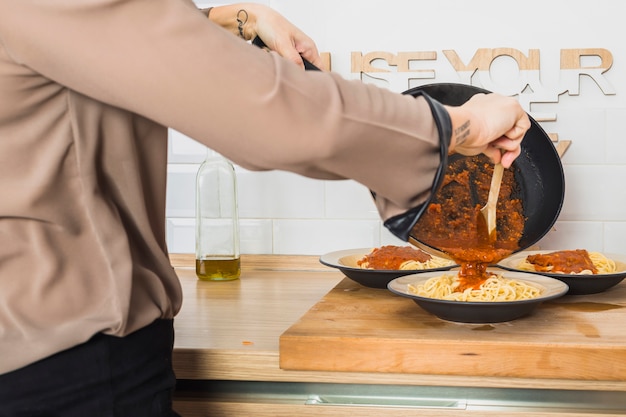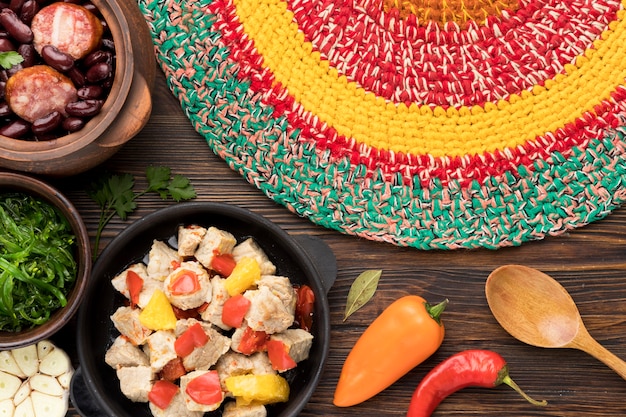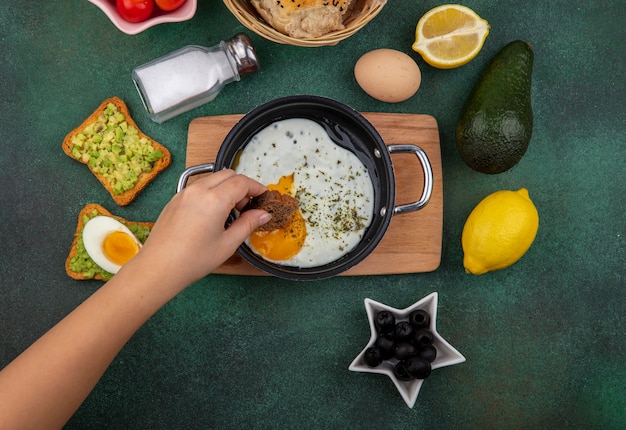(Part 1) The Tagine: A Journey into Tradition

What is a Tagine, Anyway?
Let's start with the star of the show – the tagine itself. It's not just a dish, it's an experience! It's a beautiful, cone-shaped pot, usually made from glazed ceramic or earthenware, with a distinctive lid that traps steam and creates a moist, flavourful environment for the food to cook.The tagine's history goes way back, to ancient Berber culture. They were originally used over open fires, and the design is genius: the conical lid concentrates heat and steam, allowing for slow, even cooking – key to unlocking the best in those ingredients.The Beauty of slow cooking
The thing about tagine cooking is that it's all about patience. You can't rush it. It's a slow, gentle simmering process that lets the flavours meld and deepen over time. It's a bit of a contrast to our fast-paced modern world. But that's what makes it so special.I remember the first time I used a tagine. I was a bit nervous, to be honest. But as I watched the lamb stew simmering, the aromas filling the kitchen, I realised that the tagine wasn't just a pot. It was a vessel for time and flavour.The Art of Balancing Flavours
Moroccan cuisine is all about that delicate balance of sweet, sour, salty, and spicy. It's a flavourful dance that takes practice and experimentation. It's not about overpowering your taste buds, but creating a harmonious blend that leaves you wanting more. Think of Moroccan spice blend like ras el hanout – it's a magical mix of saffron, ginger, cumin, coriander, turmeric, cinnamon, and more. Each spice plays its own role, creating a symphony of tastes.(Part 2) Unlocking the Spice Cabinet

The Spice Blends: A World of Flavour
You can't talk about Moroccan cooking without talking about spices. They are the very soul of the cuisine, the vibrant heartbeat that brings those dishes to life. From the earthy warmth of cumin to the fiery kick of chili, each spice plays its unique role. The most common spice blend you'll find in Moroccan cooking is ras el hanout. It's a beautifully complex mix, with the exact composition varying depending on the region and the cook.Spice Blends Beyond Ras El Hanout
But don't stop there! The world of Moroccan spices is vast and exciting. Here are a few other common blends to experiment with:1. Chermoula: This vibrant, herbaceous blend is a staple in Moroccan cooking. It's typically made with cilantro, parsley, garlic, lemon juice, and a touch of chili. Chermoula is often used as a marinade for fish and chicken.
2. Za’atar: This fragrant blend is a popular Middle Eastern seasoning, often used in Moroccan cooking too. It's typically made with thyme, oregano, sumac, sesame seeds, and salt. Za’atar adds a beautiful depth of flavour to breads, dips, and grilled dishes.
(Part 3) Tagine Recipes for Beginners

Recipe 1: Chicken Tagine with Olives and Lemon
This is a classic Moroccan tagine recipe that's perfect for beginners. It's bursting with flavour and incredibly easy to make.Ingredients:
- 1kg boneless, skinless chicken thighs, cut into pieces
- 1 large onion, chopped
- 4 cloves garlic, minced
- 2 tsp ras el hanout
- 1 tsp ground cumin
- 1 tsp smoked paprika
- 1/2 tsp turmeric
- 1/4 tsp saffron threads, soaked in 2 tbsp hot water
- 1/2 cup dried apricots, chopped
- 1/2 cup green olives, pitted
- 1/2 cup chicken stock
- 1/4 cup chopped fresh cilantro
- Juice of 1 lemon
- Salt and pepper to taste
Method:
- In a large bowl, combine the chicken, onion, garlic, ras el hanout, cumin, paprika, turmeric, saffron, apricots, olives, and chicken stock. Season with salt and pepper.
- Transfer the mixture to a tagine pot and cover.
- Cook over low heat for 1 1/2 to 2 hours, or until the chicken is cooked through and the sauce has thickened.
- Stir in the cilantro and lemon juice just before serving.
Recipe 2: Lamb Tagine with Prunes and Almonds
This tagine is a true feast for the senses. The lamb is tender and succulent, the prunes add a touch of sweetness, and the almonds provide a delightful crunch.Ingredients:
- 1 kg lamb shoulder, cut into 2-3 cm cubes
- 1 large onion, chopped
- 2 cloves garlic, minced
- 2 tsp ras el hanout
- 1 tsp ground ginger
- 1/2 tsp cinnamon
- 1/4 tsp saffron threads, soaked in 2 tbsp hot water
- 1/2 cup dried prunes, pitted
- 1/4 cup slivered almonds
- 1/2 cup chicken stock
- 1 tbsp olive oil
- Salt and pepper to taste
- Chopped fresh cilantro for garnish
Method:
- In a large bowl, combine the lamb, onion, garlic, ras el hanout, ginger, cinnamon, saffron, prunes, almonds, chicken stock, and olive oil. Season with salt and pepper.
- Transfer the mixture to a tagine pot and cover.
- Cook over low heat for 2 to 3 hours, or until the lamb is tender and the sauce has thickened.
- Garnish with fresh cilantro and serve with couscous.
(Part 4) Beyond the Basics: Exploring the World of Moroccan Cuisine
Okay, so you've got the basics down. Now, let's explore a bit more! Moroccan cuisine is a treasure trove of flavour and variety, so let's dive into some of the other incredible dishes you can create.1. The Wonderful World of Couscous
Couscous is the quintessential side dish in Moroccan cuisine. It's a fluffy, light grain that absorbs the flavours of the tagine beautifully. But it's so much more than just a side dish.Think of couscous as a blank canvas. You can dress it up with a variety of vegetables, dried fruits, herbs, and spices. It's a versatile dish that can be served hot or cold.
2. The Art of Moroccan Salads
Salads are a staple in Moroccan cuisine, often featuring fresh, vibrant ingredients like tomatoes, cucumbers, onions, and herbs. But Moroccan salads are anything but boring. They're full of flavour, often incorporating citrusy dressings, spices, and even preserved lemons.A classic Moroccan salad includes preserved lemons, which add a unique, tangy flavour that is truly unforgettable.
3. The Sweet Delights of Moroccan Desserts
Moroccan desserts are a real treat for the senses. They're often beautifully decorated with nuts, spices, and dried fruits.One of the most popular Moroccan desserts is msemen, a flaky, buttery pastry that’s often filled with honey and almonds.
(Part 5) Creating the Perfect Tagine Experience
Alright, you've got your tagine, your spices, your ingredients – now it's time to create the perfect Moroccan dining experience.Setting the Mood
Think about the ambience you want to create. Moroccan cuisine is all about warmth, hospitality, and sharing.Set the table with colourful textiles, candles, and aromatic incense. Play some traditional Moroccan music to enhance the atmosphere.
The Power of Presentation
Don’t underestimate the power of presentation. Moroccan cuisine is visually stunning, and a beautifully arranged plate can elevate your meal to a whole new level.Serve your tagine in the traditional tagine pot, garnished with fresh herbs and a sprinkle of almonds or pistachios.
Pairing Your Tagine
When it comes to beverages, you've got some delicious options.1. Moroccan Mint Tea: This refreshing, sweet tea is a staple in Morocco. It’s the perfect accompaniment to a rich, flavourful tagine.
2. Wine: If you’re looking for a more sophisticated pairing, Moroccan wines are a wonderful choice. They offer a variety of flavours, from crisp whites to full-bodied reds.
(Part 6) Embracing the Moroccan Spirit
Moroccan cuisine is more than just a collection of recipes. It's a reflection of a culture, a way of life.1. The Importance of Hospitality
Hospitality is a cornerstone of Moroccan culture. They believe in welcoming guests with open arms and sharing their food and traditions.When you cook Moroccan food, you’re not just preparing a meal, you’re sharing a piece of their culture.
2. The Art of Sharing
Moroccan meals are often shared, with dishes placed in the center of the table for everyone to enjoy.This communal aspect of dining is an important part of the Moroccan experience. It creates a sense of togetherness and allows everyone to enjoy the flavours and aromas.
3. The Joy of Experimentation
Moroccan cuisine is full of surprises. Don’t be afraid to experiment with different spices, ingredients, and techniques.Each cook has their own unique style and preferences. There are no set rules, just a spirit of creativity and adventure.
(Part 7) Mastering the Tagine: A Journey of Discovery
So, there you have it. A crash course in the wonderful world of Moroccan cooking. It’s a journey of discovery, filled with flavour, tradition, and a whole lot of love.My Personal Journey
My own journey with Moroccan cuisine has been truly transformative. It’s opened my eyes to a whole new world of flavours and textures. And the more I explore, the more I discover.Each time I cook a tagine, I learn something new. I learn about the spices, the techniques, and the spirit of Moroccan cooking.
Don’t Be Afraid to Experiment
Remember, the most important thing is to have fun! Don't be afraid to experiment with different ingredients, spices, and techniques. There are no right or wrong answers in the kitchen.The beauty of cooking is that you can always adjust the flavours to your own taste preferences.
(Part 8) FAQs
Here are some common questions about Moroccan cooking that I often get:1. Where can I find authentic Moroccan ingredients?
You can usually find most Moroccan ingredients at speciality grocery stores or online retailers. Many larger supermarkets also carry a selection of Moroccan spices and pantry staples.
2. What are some good substitutes for certain Moroccan spices?
If you can't find a particular spice, there are usually good substitutes. For example, if you don't have ras el hanout, you can create your own blend using cumin, coriander, turmeric, cinnamon, and ginger.
3. Can I cook tagine dishes in a regular pot?
You can certainly cook tagine dishes in a regular pot, but the results won't be the same. A tagine pot is specifically designed to create a moist, steamy environment that helps to tenderise the meat and meld the flavours.
4. What are some other traditional Moroccan dishes?
Besides tagines, there are many other traditional Moroccan dishes to explore, such as:
- Pastilla: A flaky, savory pastry filled with pigeon, chicken, or fish, and often topped with sugar and cinnamon.
- Tanjia: A slow-cooked beef stew traditionally cooked in a clay pot.
- Harira: A hearty soup made with tomatoes, lentils, chickpeas, and spices.
- Bissara: A thick, creamy soup made with broad beans.
5. Where can I learn more about Moroccan cuisine?
There are many resources available to help you learn more about Moroccan cuisine, such as cookbooks, websites, and online cooking classes.
You can also explore Moroccan food blogs and forums for recipes, tips, and inspiration.
(Part 9) Embrace the Journey
There you have it, your guide to the wonderful world of Moroccan cooking. It’s a journey that will take you on a delicious adventure, filled with exotic flavours and cultural insights.So, grab your tagine, gather your ingredients, and get ready to create a culinary masterpiece. You’ll be surprised at how easy and rewarding it can be to bring the vibrant flavours of Morocco to your own kitchen.
(Part 10) More than just a Meal
Remember, cooking is more than just preparing food. It's about creating experiences, sharing stories, and connecting with the world around you.So, the next time you cook a tagine, think about the journey that it represents. Think about the spices, the history, the culture, and the love that goes into every bite.
(Part 11) The Art of Choosing a Tagine
Now, let's talk about the tagine itself. Choosing the right one can make a huge difference in your cooking experience.Types of Tagines
You’ll find tagines made from a variety of materials, each with its own unique characteristics.
1. Ceramic Tagines: These are the most traditional and popular type of tagine. They’re known for their beautiful glazes and their ability to distribute heat evenly.
2. Earthenware Tagines: These tagines are made from unglazed clay, which allows them to absorb moisture and release it back into the food, creating a wonderfully moist cooking environment.
3. Cast Iron Tagines: These tagines are durable and can withstand high temperatures. They’re also great for searing meats before slow cooking.
4. Stainless Steel Tagines: These tagines are modern and easy to clean. They’re a good option for those who want a more contemporary look.
Size Matters
When choosing a tagine, consider the size you need. If you’re cooking for a small family, a smaller tagine will do. If you’re feeding a crowd, you’ll need a larger one.
The Lid is Key
The lid of the tagine is crucial for trapping steam and creating that moist, flavourful cooking environment. Make sure to choose a tagine with a lid that fits snugly and has a good seal.
(Part 12) Caring for Your Tagine
Once you’ve got your perfect tagine, you’ll want to take good care of it to ensure it lasts for years to come.1. Handwashing is Key
Most tagines are not dishwasher safe. Handwash your tagine with warm, soapy water.
2. Avoid Extreme Temperature Changes
Don’t place a hot tagine directly on a cold surface. Let it cool down gradually to prevent it from cracking.
3. Seasoning is Important
Some tagines, like those made from earthenware, need to be seasoned before use. This helps to create a non-stick surface and prevents food from sticking.
4. Storage Matters
Store your tagine in a dry place, away from direct sunlight.
(Part 13) The Moroccan Culinary Tradition: More Than Just Food
Cooking is more than just preparing food; it's about preserving traditions, sharing stories, and creating memories that last a lifetime. In Morocco, culinary traditions have been passed down through generations, reflecting the country's rich history and diverse culture.A Tapestry of Flavours
Moroccan cuisine is a beautiful tapestry of flavours, a symphony of spices and ingredients that reflect the country's unique geographical location and diverse influences. From the vibrant spice markets of Marrakech to the coastal regions of Essaouira, each region has its own culinary traditions and specialities.Food as a Language
In Morocco, food is more than just sustenance; it's a language. It's a way of expressing hospitality, sharing joy, and forging connections. A shared meal is an opportunity to celebrate life, to connect with friends and family, and to build lasting memories.(Part 14) Let's Get Cooking!
Now that you've got a glimpse into the world of Moroccan cuisine, it's time to start cooking! Don't be afraid to experiment, to embrace the journey, and to discover your own unique culinary style.Remember, every tagine you cook is a story waiting to be told.
Everyone is watching

Prime Rib Roast Cooking Time Chart: Per Pound Guide
Cooking TipsPrime rib roast. Just the name conjures images of lavish dinners, crackling fires, and hearty laughter. It’s ...

How Long to Bake Potatoes in the Oven (Perfect Every Time)
Cooking TipsBaked potatoes are a staple in my kitchen. They're incredibly versatile, delicious, and surprisingly easy to m...

Perfect Rice Every Time: The Ultimate Guide to Cooking Rice
Cooking TipsAs a self-proclaimed foodie, I've always been a bit obsessed with rice. It's the foundation of countless cuisi...

The Ultimate Guide to Cooking Asparagus: Tips, Techniques, and Recipes
Cooking TipsAsparagus. The mere mention of this spring delicacy conjures up images of vibrant green spears, crisp and burs...

Ultimate Guide to Cooking the Perfect Thanksgiving Turkey
Cooking TipsThanksgiving. Just the word conjures up images of overflowing tables laden with delicious food, the scent of r...
